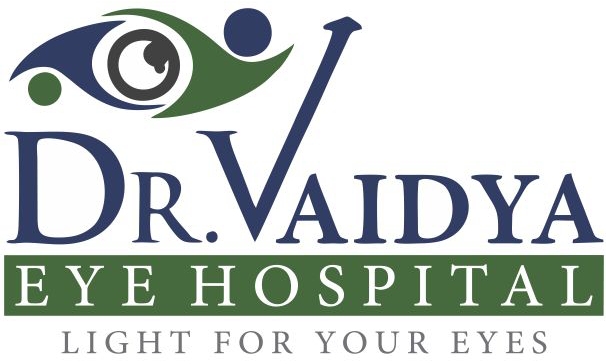- Doctor Dr. Deepak Vaidya
- Surgery Lasik
- Date December 2, 2022
What is Diabetic Retinopathy?
The retina is the layer at the back of the eye that is sensitive to light. Diabetes affects the small vessels of the retina. This leads to diabetic retinopathy. There are various stages of diabetic retinopathy.

Types of Diabetic Retinopathy
Non-proliferative or background diabetic retinopathy:
When blood vessels in the retina get damaged, they leak fluid or bleed. This causes the retina to swell and form deposits called exudates. This is an early form of diabetic retinopathy. It may not lead to any decrease in vision, but it can lead to other more serious forms of retinopathy that affect the vision.
Proliferative diabetic retinopathy:
This is an advanced stage of diabetic retinopathy. Here the blood supply to the retina is compromised. In response to this, new fragile blood vessels grow on the surface of the retina. These new vessels, being fragile, bleed easily. This can lead to serious vision problems if they bleed into the vitreous part of the eye. This is known as vitreous haemorrhage. It prevents the light from reaching the retina and thus blurs the vision. The bleeding into the vitreous area causes scar tissues to develop, which can pull the retina away from the back of the eye. This is known as retinal detachment and may lead to blindness if left untreated.
Macular edema:
Adding to the previously discussed issues, sometimes the fluid and exudates collect on the macula. The macula is the part of the retina that allows us to see fine details. The collection of fluid and exudates decreases the vision. Sometimes there may be a macular enema without any loss of vision. Therefore, it is important to have periodic check-ups to detect and treat these conditions at an early stage.
Laser treatment
The type of laser treatment used to treat diabetic retinopathy is called photocoagulation. It usually involves one or more visits to a laser treatment clinic. The procedure is usually available on an outpatient basis. Meaning, one does not have to stay in the hospital overnight.
First, a local anaesthetic is given to numb the surface of the eye, and eye drops to widen the pupils. A special lens is placed on the eye. This is done to hold the eyelids open and allow the laser beam to focus on the retina.
Small laser beams are aimed at the damaged area of the retina. This seals any blood vessels that are leaking and destroys any abnormal blood vessels that have grown on the retina. Photocoagulation is, usually, not a painful procedure. One could feel a sharp pricking sensation when certain areas of the retina are being treated.
If someone has had laser treatment in the past, they may experience discomfort during the treatment. If this is the case, you may wish to ask your doctor for stronger medication or a mild sedative.
The two types of laser treatments used to treat diabetic retinopathy are:
Focal or grid laser photocoagulation:
Here, the laser energy is aimed directly at the affected area or applied in a contained, grid-like pattern. This is to destroy damaged eye tissues and clear away scars that contribute to blind spots and vision loss. This method of laser treatment generally targets specific, individual blood vessels.
Scatter (pan-retinal) laser photocoagulation
With this method, about 1,200 to 1,800 tiny spots of laser energy is applied to the periphery of the retina. It doesn’t touch the central area but treats the retinopathy.
Book An Appointment
Fill out the form below and one of our representatives will get in touch with you soon!
